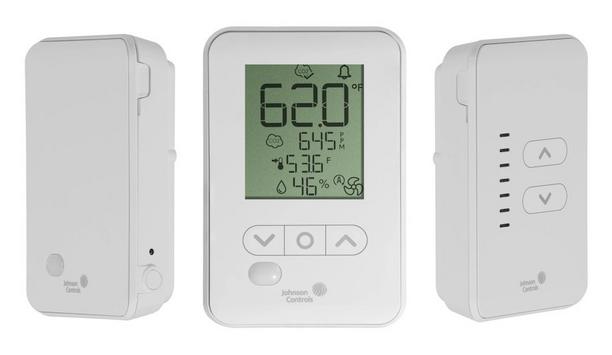According to the Centers for Disease Control and Prevention (CDC), the novel coronavirus disease 2019, also known as COVID-19 can cause mild to severe respiratory illness when an individual is exposed to the virus.
Even before the outbreak, adults on average spent nearly all their time indoors at work or at home.
importance of IAQ
In fact, the US Environmental Protection Agency (EPA) reports this amount of time reaches upwards of 90 percent for most people. Add it all up, and users just can’t stress enough the importance of good indoor air quality.
The Tassio Temp team wants to share the following list of the different indoor air quality accessories available out there. Making an investment in one or more of these helpful technologies and tools for home just might help families breathe a little easier.
Dehumidifiers
While a well-maintained air conditioning system brings down the heat and can help take some moisture out
During the summertime in Los Angeles, there is a really good chance user will be facing the opposite-of-winter humidity problem. When humidity levels are high, summer months can feel a great deal hotter. Too much moisture in the air can make cooling down more difficult, cause condensation or moisture damage to the structure of the home, and contribute to mold and other allergen growth.
While a well-maintained air conditioning system brings down the heat and can help take some moisture out of the air, users may want to invest in a whole-house dehumidifier or opt for a stand-alone unit for a space like a basement.
Humidifiers
In California winters when the air is cold and dry, whole-house humidifiers can be particularly beneficial, keeping relative humidity levels at an ideal of about 45 percent.
This means fewer scratchy throats, less dry skin, and static electricity. Plus, humidifiers can help protect furniture, wood floors, and musical instruments from shrinking, warping, and other damaging issues.
Electronic Air Cleaners
A HEPA filter and static electricity are utilized to kill or trap up to 99.98 percent of all allergens
Attached to the user heating, ventilation, and air conditioning (HVAC) systems, electronic air cleaners are a whole-house solution. An ionic system, a high-efficiency particulate air (HEPA) filter, and static electricity are utilized to kill or trap up to 99.98 percent of all allergens.
Performing an almost complete job, these cleaners combine the best of all available indoor air purification technologies.
Air Scrubbers
Viruses, bacteria, mold, odors, vapors, gases, and volatile organic compounds (VOCs) are among the substances attacked. Working with HVAC systems, air scrubbing systems are a relatively new technology.
Air is treated with an ultraviolet (UV) light while it is forced through a titanium dioxide-coated component. Additionally, contaminants are transformed into oxidizers, meaning more pathogens can be eliminated in the surrounding air and even on surfaces.
UV Air Treatment Systems
In hospitals and other healthcare facilities, UV lights are a mainstay to kill viruses, bacteria
In hospitals and other healthcare facilities, UV lights are a mainstay to kill viruses, bacteria, and other pathogens. Users can do the same: piggyback on this technology by investing in a UV home air treatment system.
Shortwave UV lights attack viruses, bacteria, mold, and other pathogens because air is forced through a UV purifier.
Ionic Air Purifiers
Improving indoor air by removing nearly everything except for odors and smoke, the most advanced ionic air purifiers can basically clean themselves.
Early models of these systems simply emitted negative ions that bonded with positively charged common indoor air pollutants; particles then grew heavy and fell onto surfaces and floors for a cleanup via dusting and vacuuming. These are highly effective systems.
HEPA Air Purifiers and Filters
Combine HEPA purifiers and HEPA filters with HEPA vacuum bags to make a big improvement in indoor air
Air purifiers and air filters branded with the HEPA designation are designed to remove 99.7 percent of all particles sized over 0.2 microns. So consider airborne particles such as mold spores, pollen, household dust, and pet dander as goners.
Combine HEPA purifiers and HEPA filters with HEPA vacuum bags to make a big improvement in indoor air. Just remember, it’s important to change HEPA filters regularly.
Activated Carbon
Remove smoke, gases, chemicals, odors, and other fumes from the air in the home in good order with activated carbon purifiers.
Many of them tackle pollutants in combination with a HEPA purifier. Successfully manage nearly all of the common indoor air issues in the home by adding a UV purifier.
Air-to-Air Exchangers
Air-to-air exchangers automatically adjust the temperature and humidity of outdoor air
Designed to bring in and treat outdoor air while pushing out the stale indoor air from home, these air-to-air exchangers automatically adjust the temperature and humidity of outdoor air prior to circulating it through ductwork.
This is then circulated throughout the home for users to breathe.
Air Filters
To keep large particles at bay before indoor air enters the furnace or air conditioning system, an air filter is required on all HVAC systems. Ranging in quality and price, filters on the lower end of quality catch only large particles, while HEPA filters trap some of the smallest.
In order to keep the air clean and equipment working properly and efficiently, it’s very important to change the air filter on a regular basis; do so at least every three months, or according to the manufacturer’s instructions. During times like these, Tassio recommends changing the filter much more frequently, even weekly or biweekly is not extreme.














